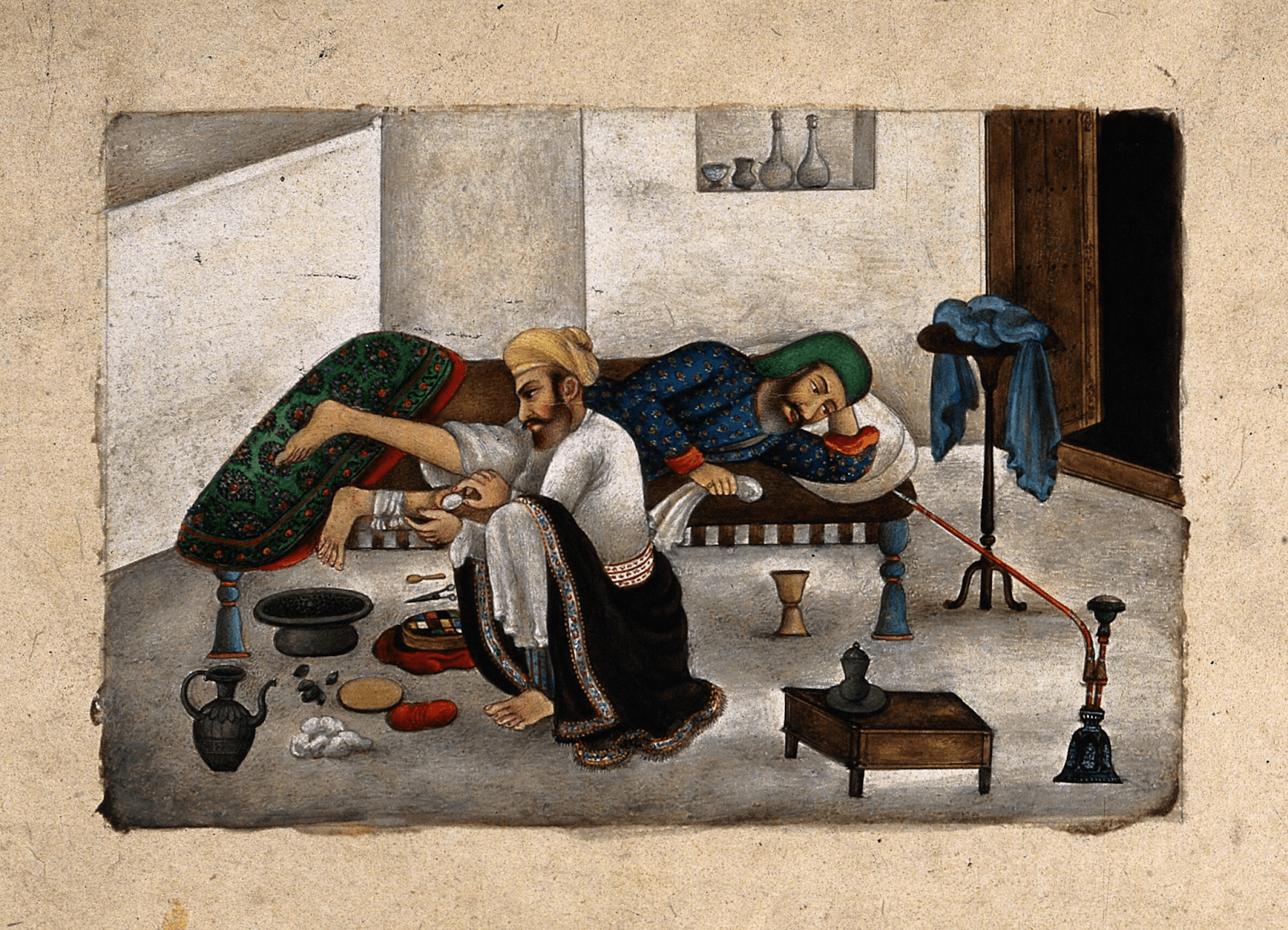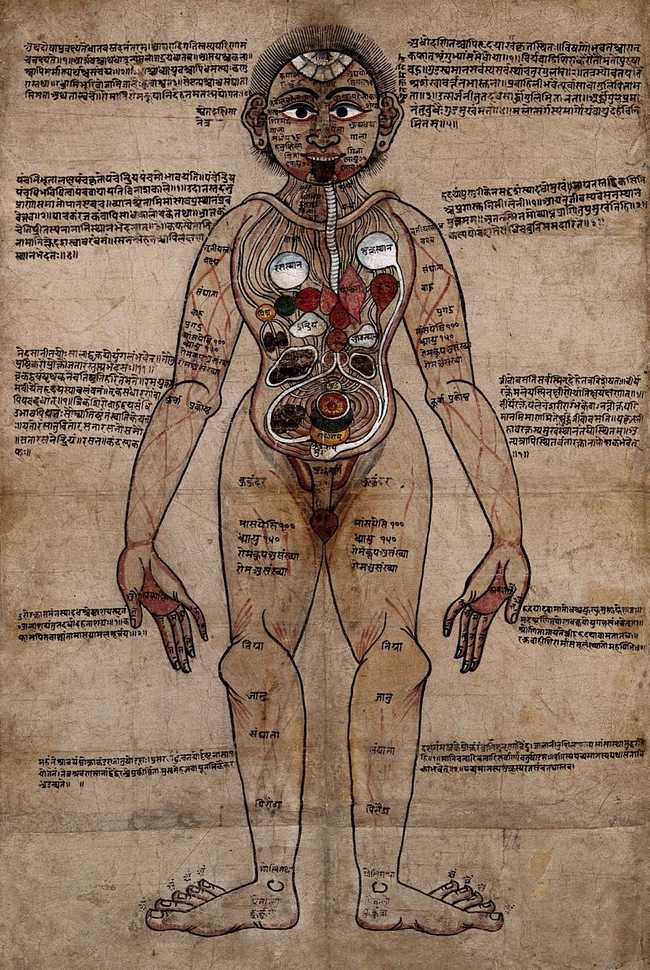
Heat and the Body in Biomedicine and Ayurveda
By Ashawari Chaudhuri
In most Asian cities, biomedicine is practiced alongside traditional forms of medicine like Ayurveda, Chinese Medicine, Korean Medicine, Sowa Rigpa, and the like. The relation between heat and the body is different in biomedicine than in most of these traditional forms of knowledge.
In biomedicine, heat is studied most often in the context of fever. It is quantifiable and measurable through devices like the thermometer. Measuring body temperature frequently has become a quotidian part of our lives over the past year of the pandemic.
When the body temperature rises beyond 98.6 degrees Fahrenheit (or 37 degrees Celsius), it is considered as fever. However, this aspect of fever as a symptom that can be detected through measurement is a recent shift in the history of Western medicine.
Long before fever could be measured and quantified, philosophers and physicians were perplexed about the rise in body heat during fevers. Throughout antiquity and the medieval period in Europe, fever was an experience that involved pain, sweating, and heating of the body. Philosophers, scholars, and physicians inquired about the causes of febrile heat within the broader rubric of humoral medicine.
Galen, a Greek physician and philosopher writing in the second century AD, for instance, described types of fever according to their periodicity--- semitertian (that occurred daily), tertian (every other day), or quartan (every three days). His several treatises on fever guided Western medicine until the eighteenth century when humoral theories started to be challenged.

Relating different kinds of fever. Torti Francesco, Therapeutice specialis ad febres periodicas perniciosas. (Modena, Italy: Soliani, 1712) Source: Wellcome Library, London.
William Harvey, an English physician, proposed his theory about circulation of blood and explained fever as a symptom of the blood trying to eliminate waste from the body.
It was in the eighteenth century that the thermometer, although invented a few centuries earlier, was standardized by Daniel Gabriel Fahrenheit. He invented the mercury-in- glass thermometer and the Fahrenheit scale, both of which are still used today.
Since the twentieth century, the emergence of germ theory, microbiology, and molecular biology made fever a symptom and not a disease. Heat, in this context, became a matter of measuring, counting, and quantifying.

Thermometer, D.G. Fahrenheit, Amsterdam, 1727. Reproduced with permission from the Boerhaave Museum.
As historian of medicine Charles Rosenberg has rightly pointed out:
"Fevers were by the end of the nineteenth century, not phenomena that needed to be understood primarily in terms of the unique characteristics and life events of individual bodies but things that could be understood and imagined outside those individual sufferers."
— Charles Rosenberg1
In Ayurveda, on the other hand, heat is understood as experiential, qualitative, and relative. Heat is not discussed only in the context of fever. The relation between the body and heat forms a critical part of theory and practice in Ayurveda.
The body is the microcosm of the five elements in the environment or Panchamahabhootas--- air, water, fire, earth, and space. The body is constituted by properties of these five elements. Hence, fire is present in the body in the form of heat, earth is present as a substance that binds different parts of the body together, and air is present through movement.
These elements are manifested in the body through three basic energies or humors known as doshas. These are vata, pitta, and kapha. Each of these doshas is a combination of two elements. Vata is composed of air and space, pitta of fire and water, and kapha of earth and water.

Index of a notebook on Ayurvedic medicines. Approximately, end of 19th century. Collected by author during fieldwork in Kolkata.
Heat in Ayurveda is experiential and qualitative because it is not the measurement of heat, or temperature, that plays a significant role in diagnosis and treatment of a disease. Instead, the function of transformation or conversion of heat is of primary importance in Ayurveda.
Further, each body is constituted by a specific combination of the doshas, making the importance of heat different depending on the person. For a pitta dominant body, for instance, cooling foods might be prescribed as opposed to hot food or medicines that a kapha dominant body might require.
Again, "hot" and "cold" are not based on temperatures of food, but on the function that they induce in the body. For instance, black pepper is considered hot because it increases the pitta that leads to an increased flow of gastric juices, thereby increasing appetite and acidity.

A drawing of the body based on Ayurvedic understandings with organs named as receptacles for one or another of the organic fluids. The text captions are extracts from the Bhāvaprakāśaḥ, written between 1550 and 1590 by Bhāvamiśra. Nepalese, 1800s. Source: wellcomecollection.org
Fever or jwara can be caused by the vitiation of one or more doshas. It is one of the few afflictions considered to impact the body, mind, and the sense organs at the same time. The body becoming hot is not the only aspect of fever which is taken into consideration while treating it. The specific experiences of different bodies based on their doshas determine the combination of medicines and foods that are prescribed to treat fever.
In summary, for both biomedicine and Ayurveda the relation between the body and heat is important, but their meanings and uses in treating diseases are quite different.
- Charles Rosenberg in Foreword of More than Hot: A Short History of Fever by Christopher Hamlin, JHU Press: Baltimore (2004).↩
